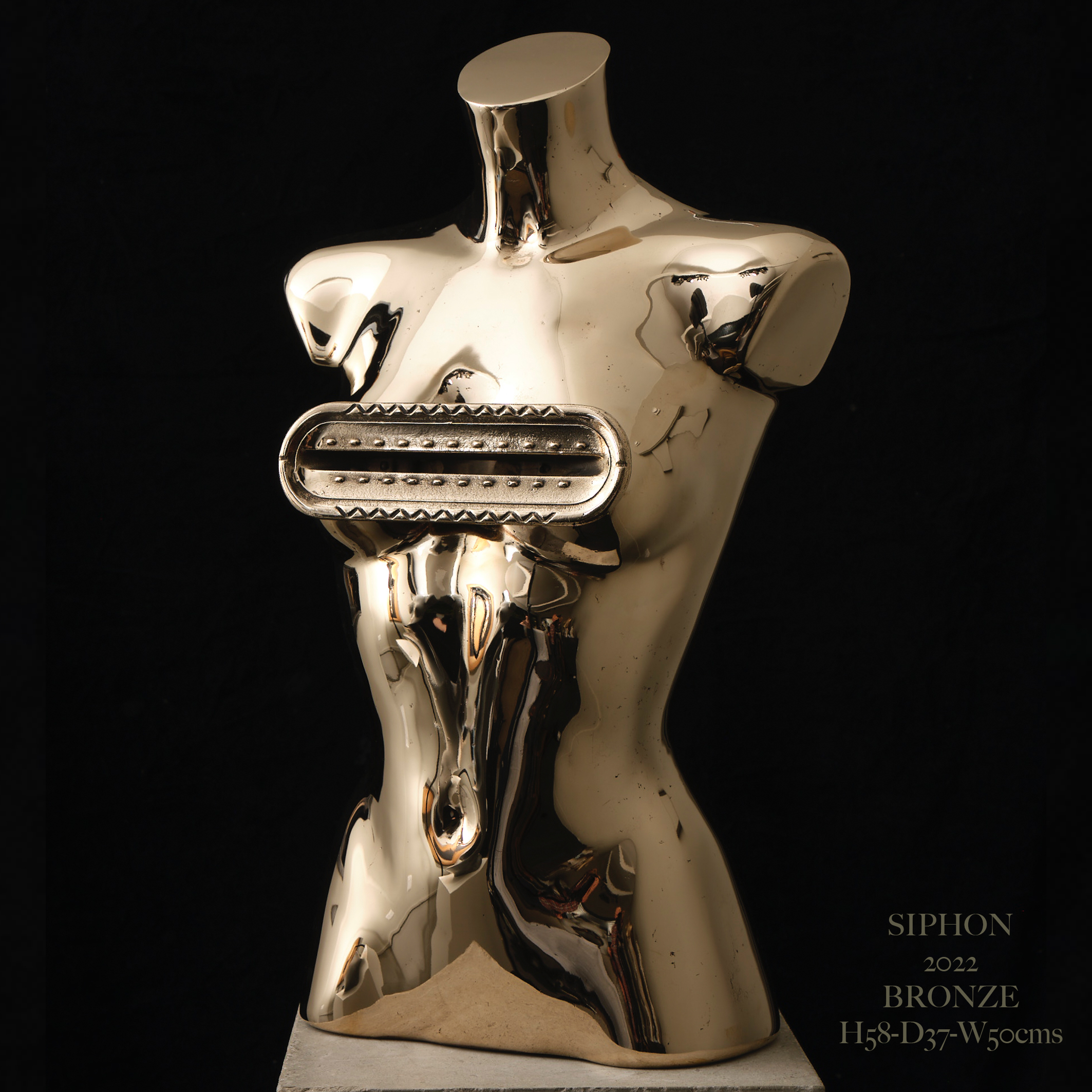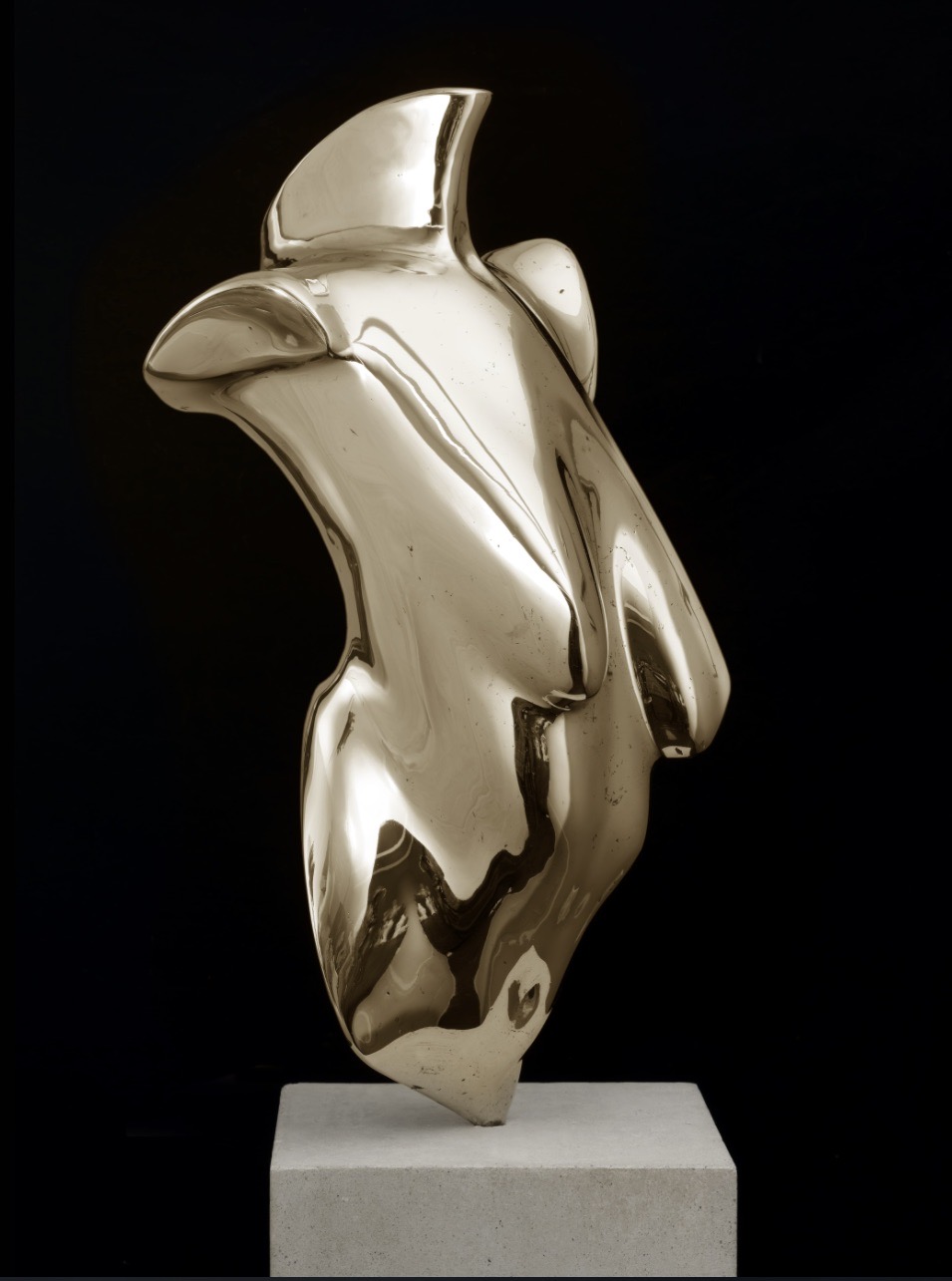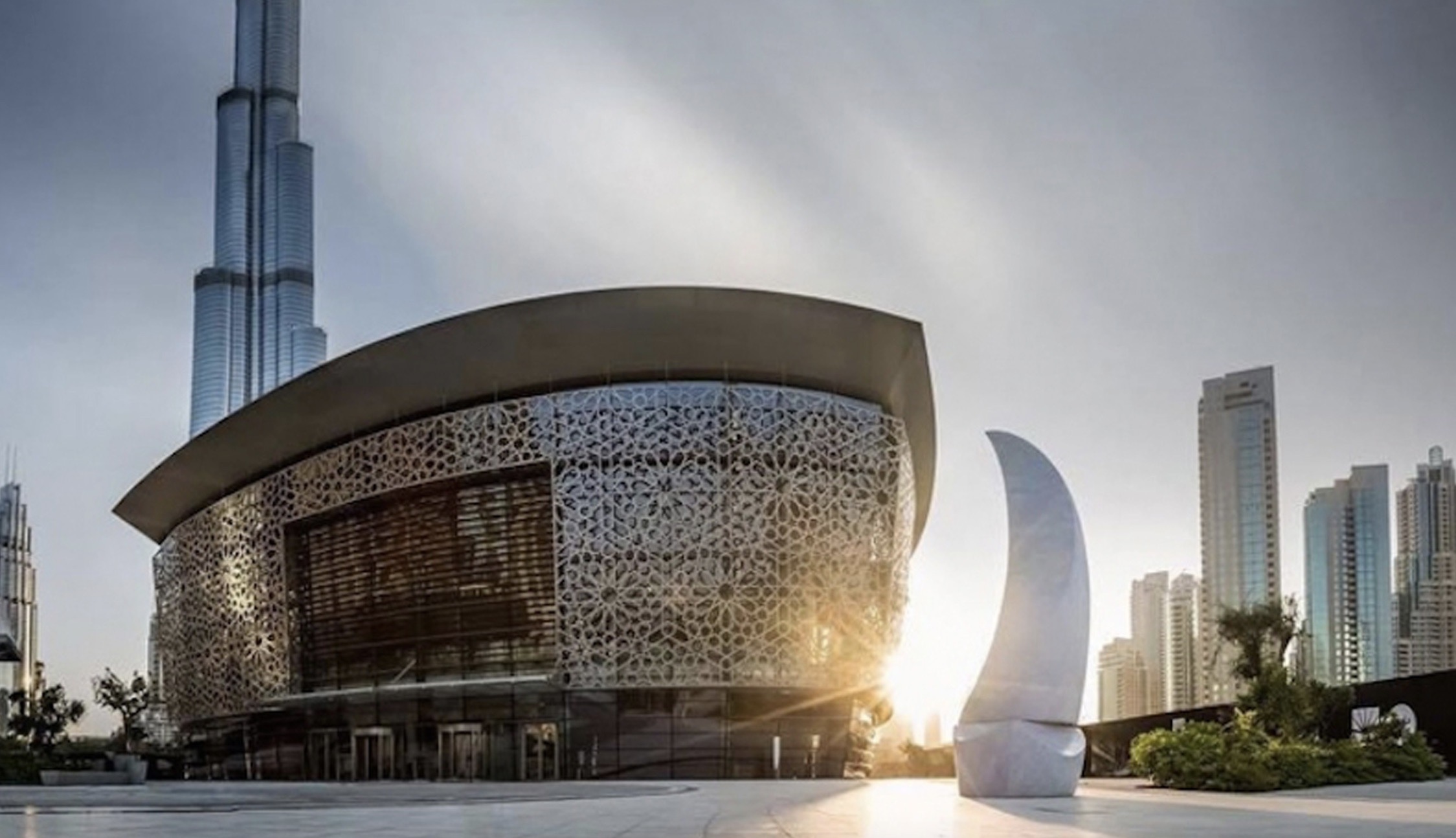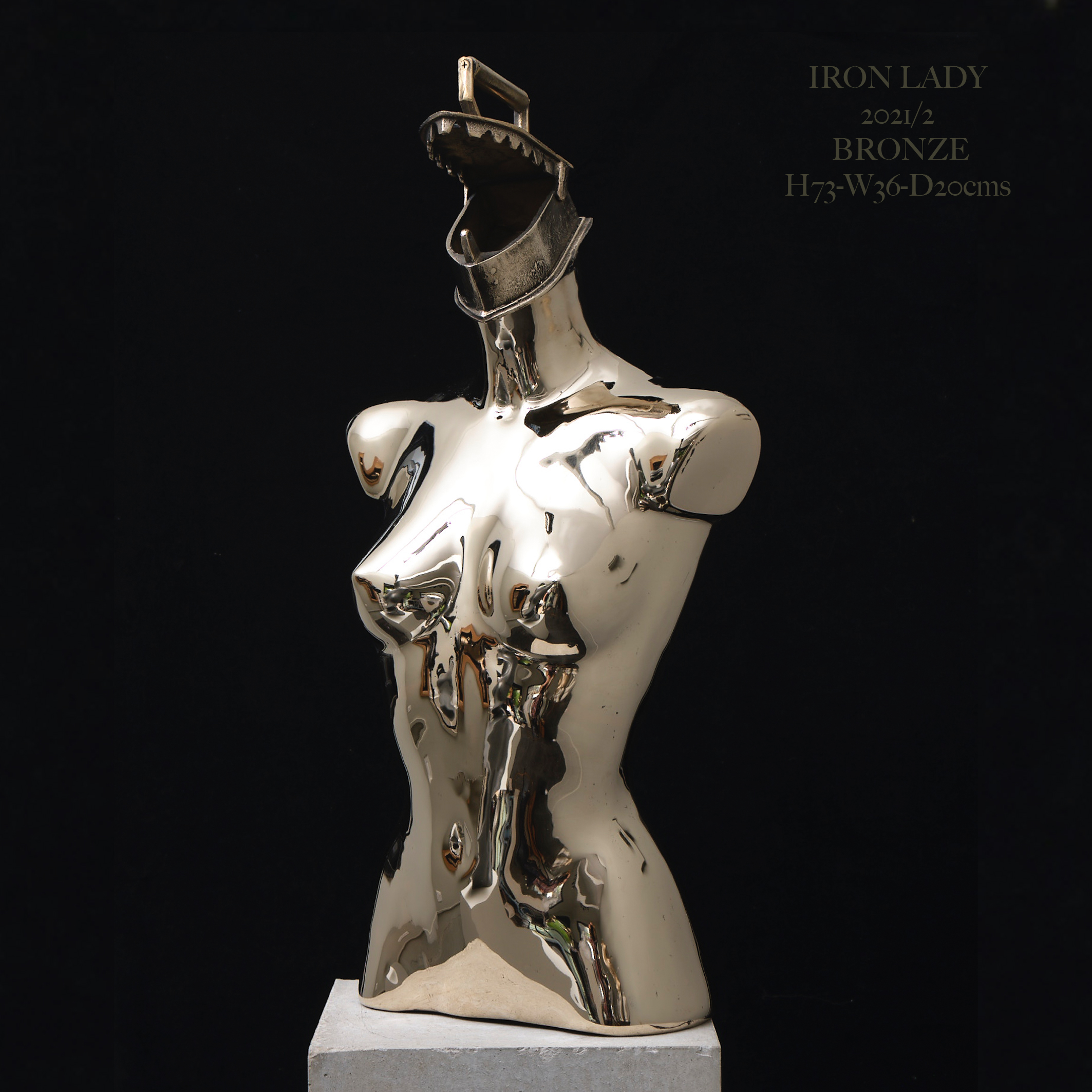Beth Cullen Kerridge

I encountered Beth’s Bronze sculptures of female torsos with a vintage iron head or a Hoover necklace and a letter box chest in London at the Saatchi gallery, gleaming and shining they resonated the elusiveness of the creatures from a Star Wars film and the same time signified something more relevant, that journey of domesticity that has encompassed the role of womanhood for centuries. That all encompassing of voyages passed, the fights of the Suffragettes and the longstanding accountabilities put upon being women, the jugglers, mothers, caretakers, the workers and social peacemakers. Talking to Beth, she clarifies that the artwork in her recent exhibition titled ‘Femella’ is not really about the suffering of women as victims “It’s our natural instinct to keep things clean and we are always the ones that tidy up” she tells me. It’s more so that these gadgets made our lives easier, she explains, how far we have come since we have had these appliances, it gave us room to be ourselves, she clarifies. Then she goes on to explain another angle “It’s more of a step-ford wifey thing” like a car bumper, a guy in the garage with all his gadgets and the wife being one of his possessions like a car, and how we have moved away from that, Beth explains. “It’s more of a celebration” how great we are, all of us women.




At the same time her marble sculptures continue the conversation, the smooth polished marble, with ‘I want to touch that so much finish’ that illuminates the softness of female and male torsos, however with an interesting twist, in as such the torsos twist on themselves in a spiral movement, or a gaping hole in the torso, it could be representative of the anxieties that turn in our stomachs or as Beth describes is as “Bending over backwards to make it all work” she emphasises, it is more of a spin and not so much a physical thing, she explains.




Beth’s sculpture, the Dhow Sail, an enormous 16 foot sail in Marble stands outside the Dubai Opera House, won her the Global Art Award, and her work of the business shirts, titled ‘Board room sacrifice’ displayed in London parks or the knotted ties and buttoned shirts are more of her interesting dialogues of the everyday, and she describes her inspirations in all she does as life, she can’t help doing it, “I think we absorb what’s going on around us” she tells me, that we need to try to be big enough to let it out, and to trust that you are part of the world. For a period, Beth took a back seat with her art, and supported her husband, Michelin star chef Tom Kerridge, and now she is able to focus on what she has to say creatively.


The method of Beth’s work as a sculptor is complex and does involve mathematics and mental as well as physical stamina, “Physical strength it all starts in the head” and she points towards her forehead, and shows me her arm muscles, we both giggle, at the fact that when we want something done, sometimes we do it ourselves, whether it’s moving heavy furniture or using the power drill.


Beth studied Fine art at John Moores University in Liverpool followed by the Royal College of Art, plus working as an assistant with abstract and surrealist sculptors Sir Anthony Caro, Alberto Giacometti as well as Eduardo Paolozzi who led the way in pop art and Elizabeth Frink. Included in her training is the experience at the stone yards in Carrara Italy, learning the skills from artists like Michelangelo, a process used for centuries. Beth explains the complexities of creating a large marble artwork, the artist creating the concept and model and the work of the artisans. Modern pointing devices are used to accurately measure and replicate a one-to-one copy of the original out of plaster, wax or clay, they are computerised, with super precise digital counterparts, connected to a pantograph, that can scan a three dimensional model, and carve the marble to match it. The initial sculpture model is recreated in cast plaster, this plaster mould becomes the model by which the block of marble is rough cut by the artisan and then shipped back to the artist. The artist finalises the carving, the marble is gouged and moulded with motorised and old-fashioned chisels. Beth does have her own studio at home, working with big machinery, and diamond tipped roped and cutting machines, she will hone her sculptures by giving the artwork its life. Her son is a regular visitor, she tells me, and she shows me a photograph as he beams with pride at his Mother’s recent show at the StArt Fair, at the Saatchi gallery.



We talk about her inspirations, she mentions Sir Anthony Caro, Michelangelo, Picasso and her Dad, Beth describes the influence of her father’s work as a painter, a ceramics artist and the pressures of being an entrepreneur, she describes Stoke-on-Trent where she grew up and the influence of her surroundings, a cultural hub in the potteries and the iron Industry, how this all influenced a desire to be an artist. However, she went into graphics and then moved into fine art. When she went to Liverpool to study painting, “My paintings started coming out the walls” she exclaims. One of her tutors couldn’t believe she was studying painting, so she switched courses to sculpture, working with clay in all sorts of large constructions; at the Royal college it was working with bronze castings. However, training with Caro for eight years, she describes the relevance of how she eventually understood his work, when it had been cleaned and repaired and the people put it back the wrong way. As an artist herself Beth describes the construction and aesthetics, playing in her head, to this day she will go to bed at night and construct in her half sleep.




We discuss the best and the worst in the art world, “I hate all that psychobabble talking”. She wished a painting or sculpture could talk for itself, however the best of the art world is that it is there, she exclaims. It separates us from other animals, listening, seeing, talking and creating it is our voice and a celebration of being human, Beth emphasises. From the past and into the future, it will always be a study of humanity. This made me think of Elon Musk’s idea and his ambition that humans will and should be a multi planetary species, and his intention to transport a 100 people to Mars to land a colony there. What will humans take with them? Seeds and plants, but there will always be Art that will accompany us.
Beth’s next exhibition of Femella will be at Gallery 8, 8 Duke Street St James’s, SW1Y 6BN, Tuesday 8 November – Saturday 12 November 2022.
Interview: Antoinette Haselhorst
